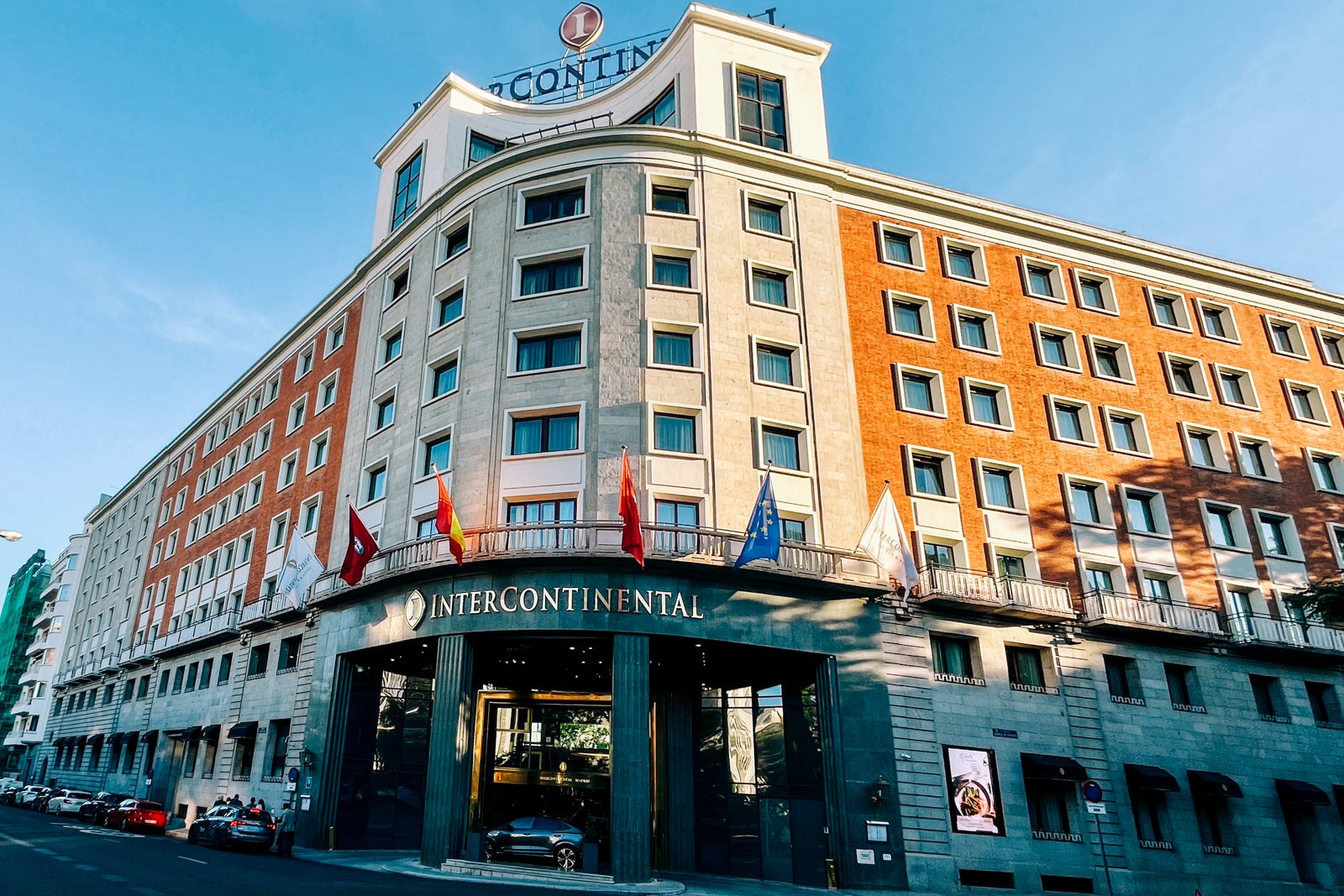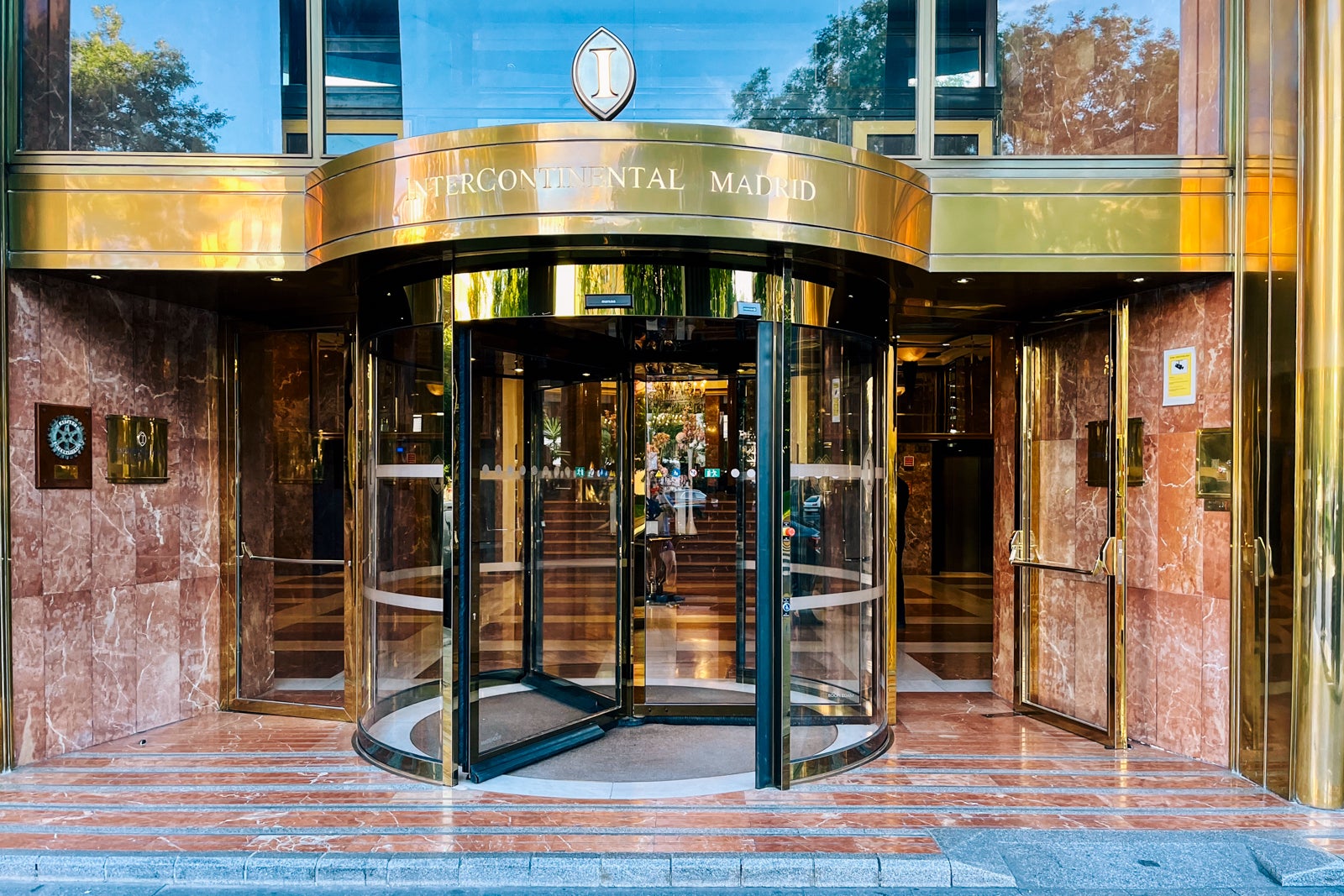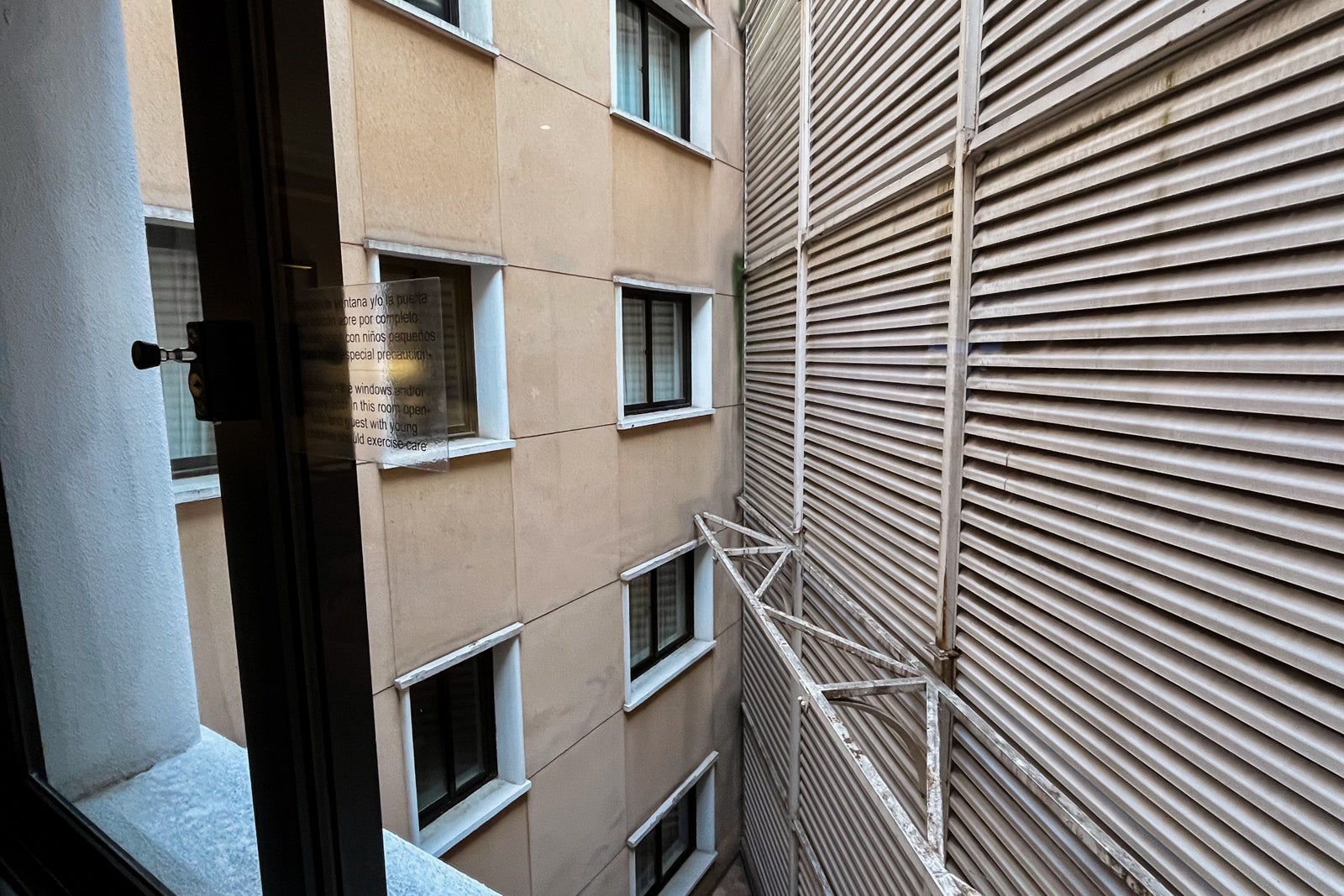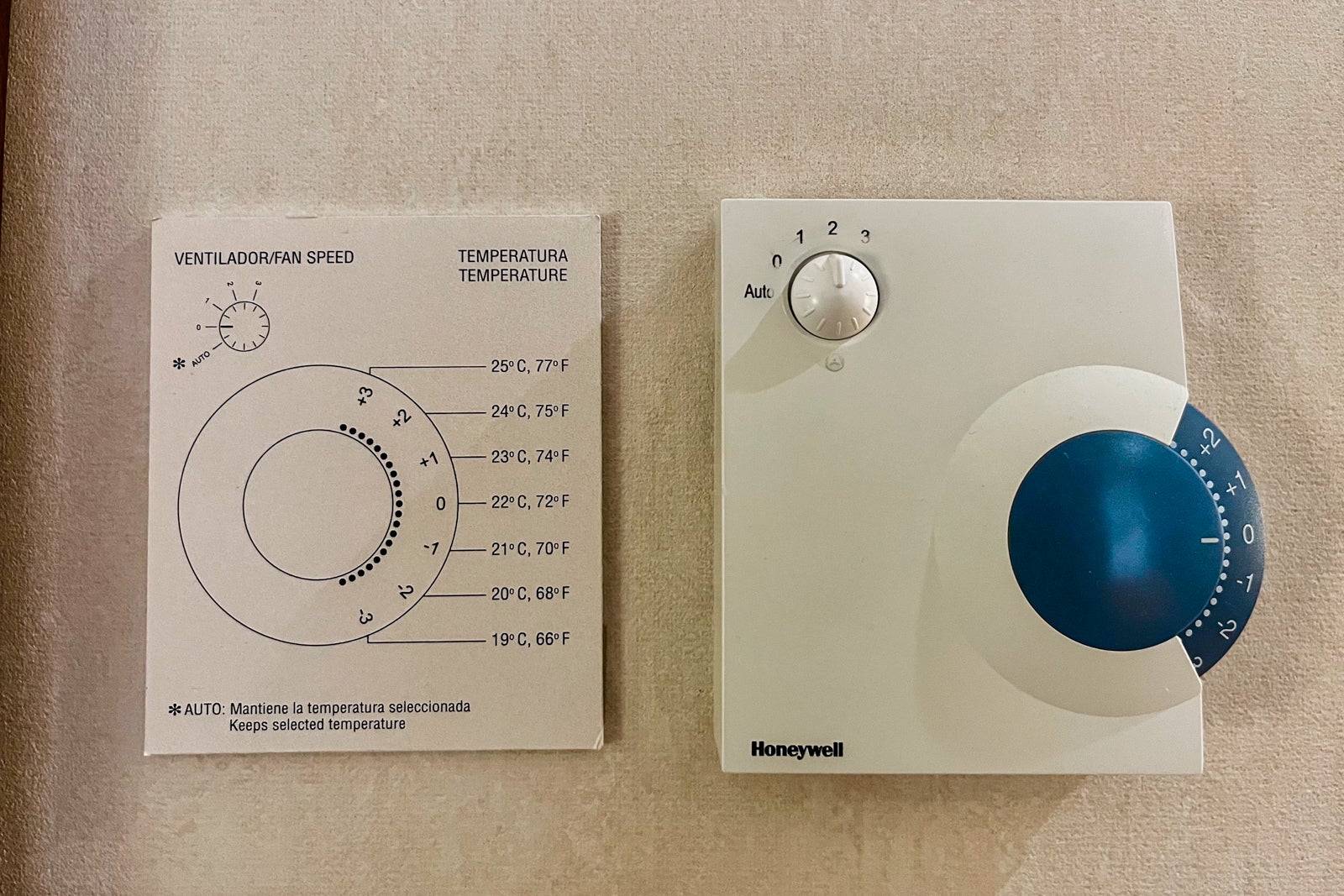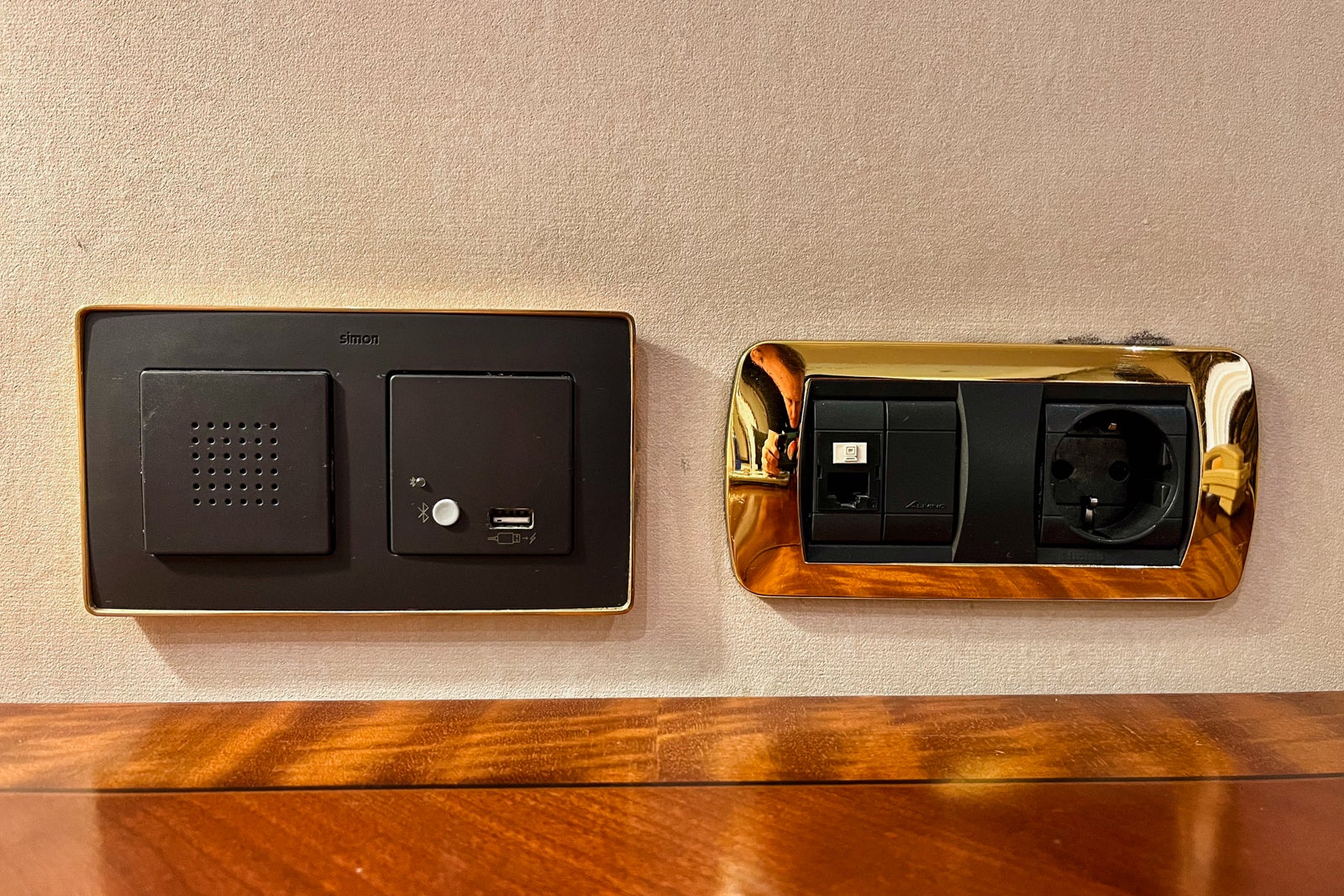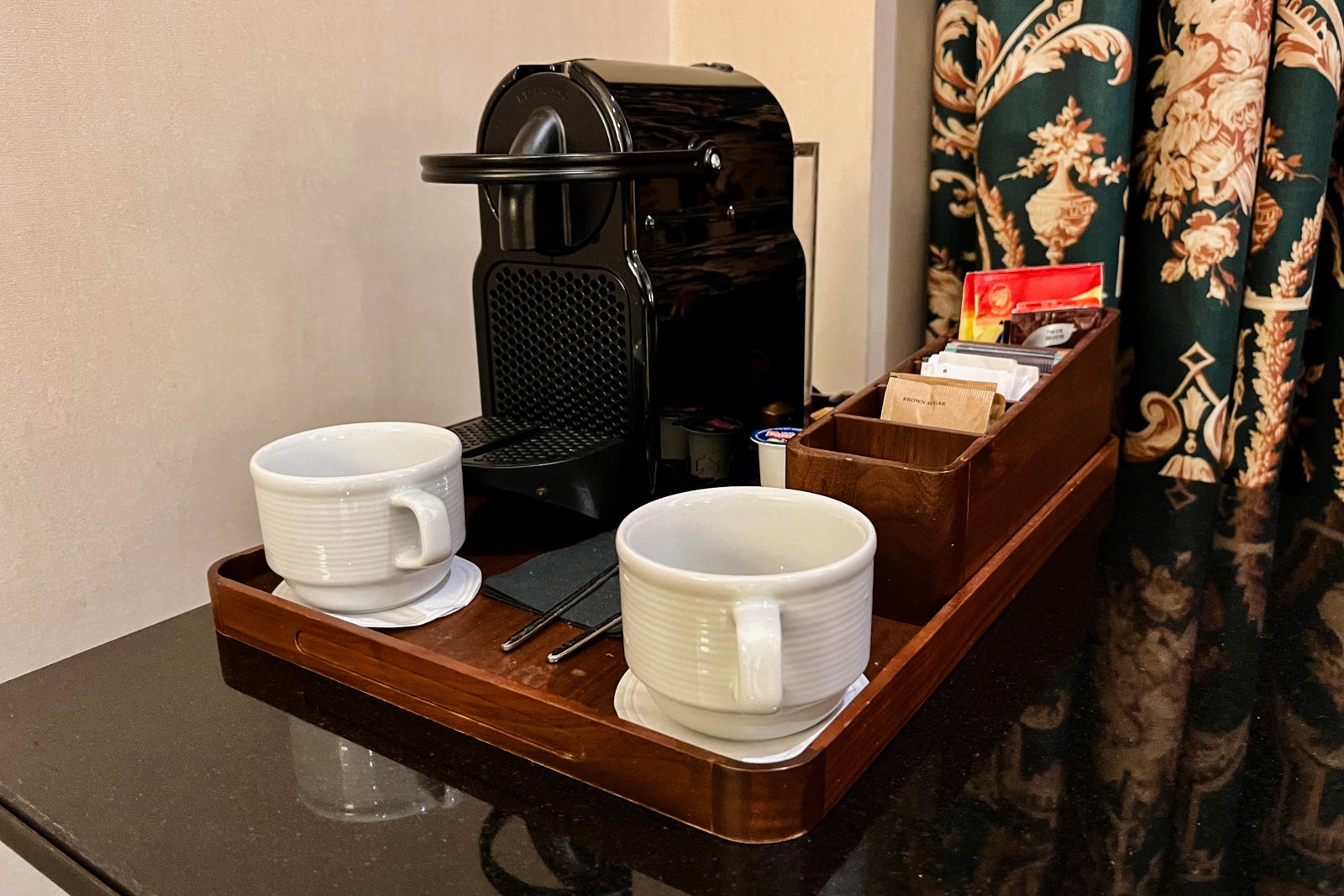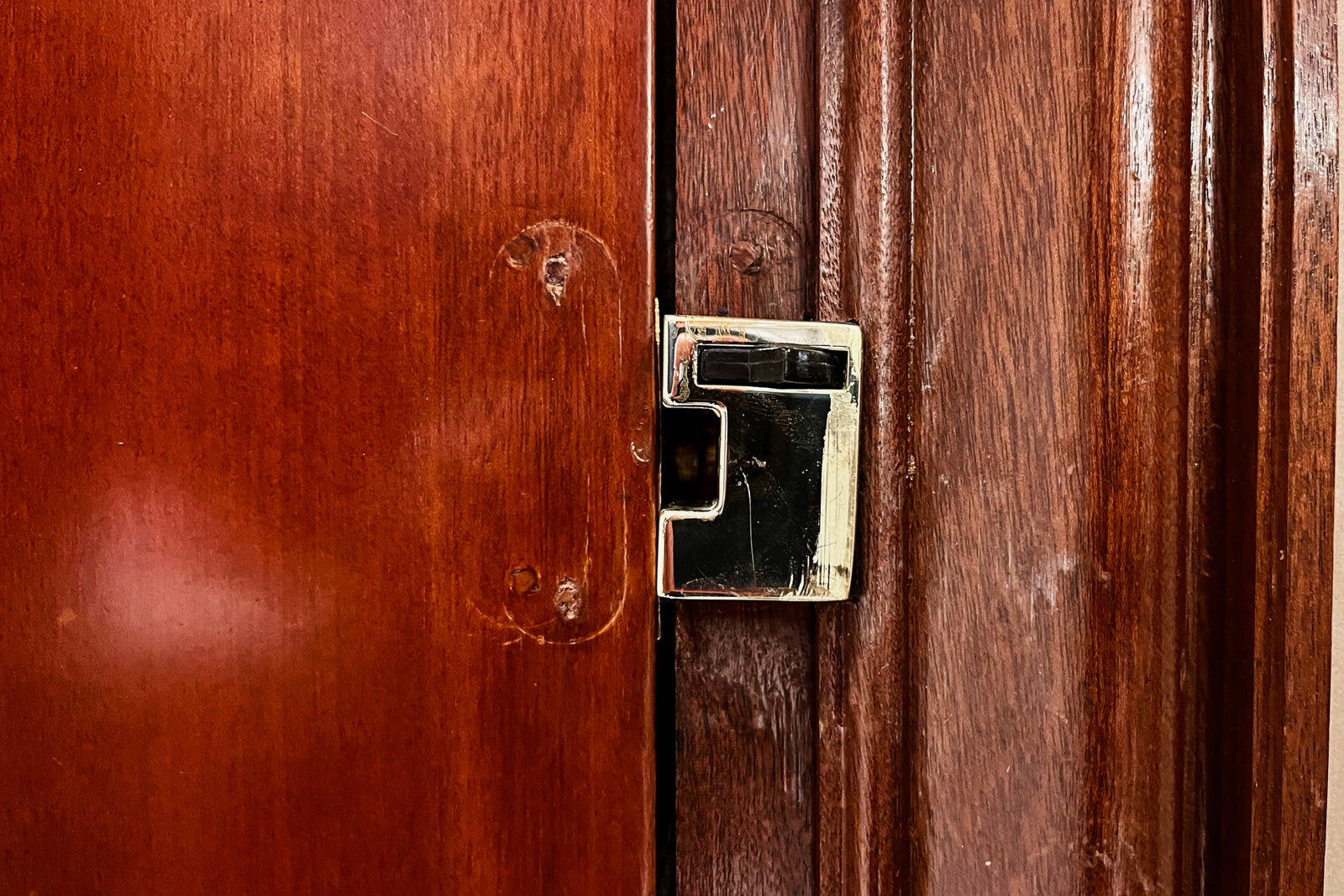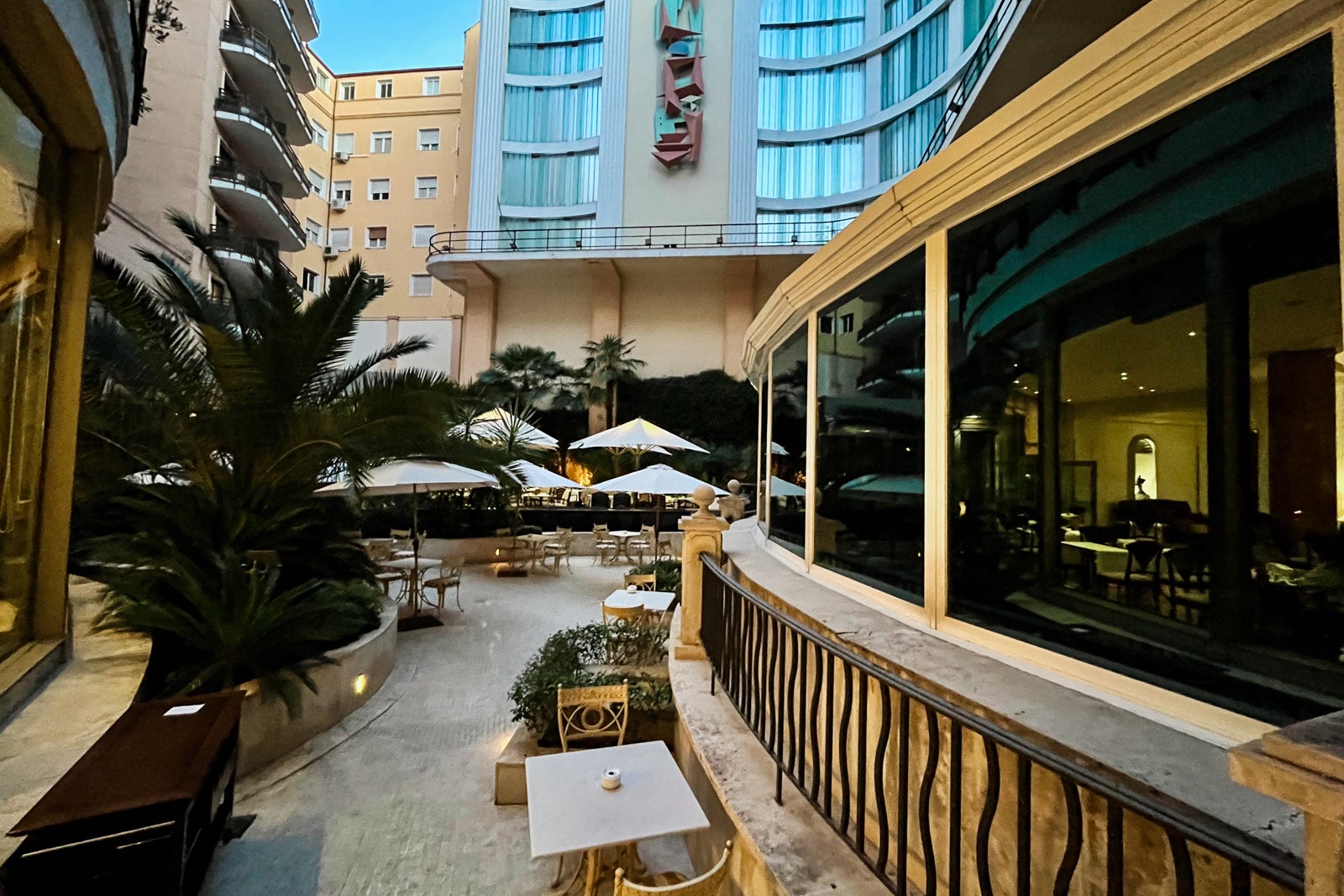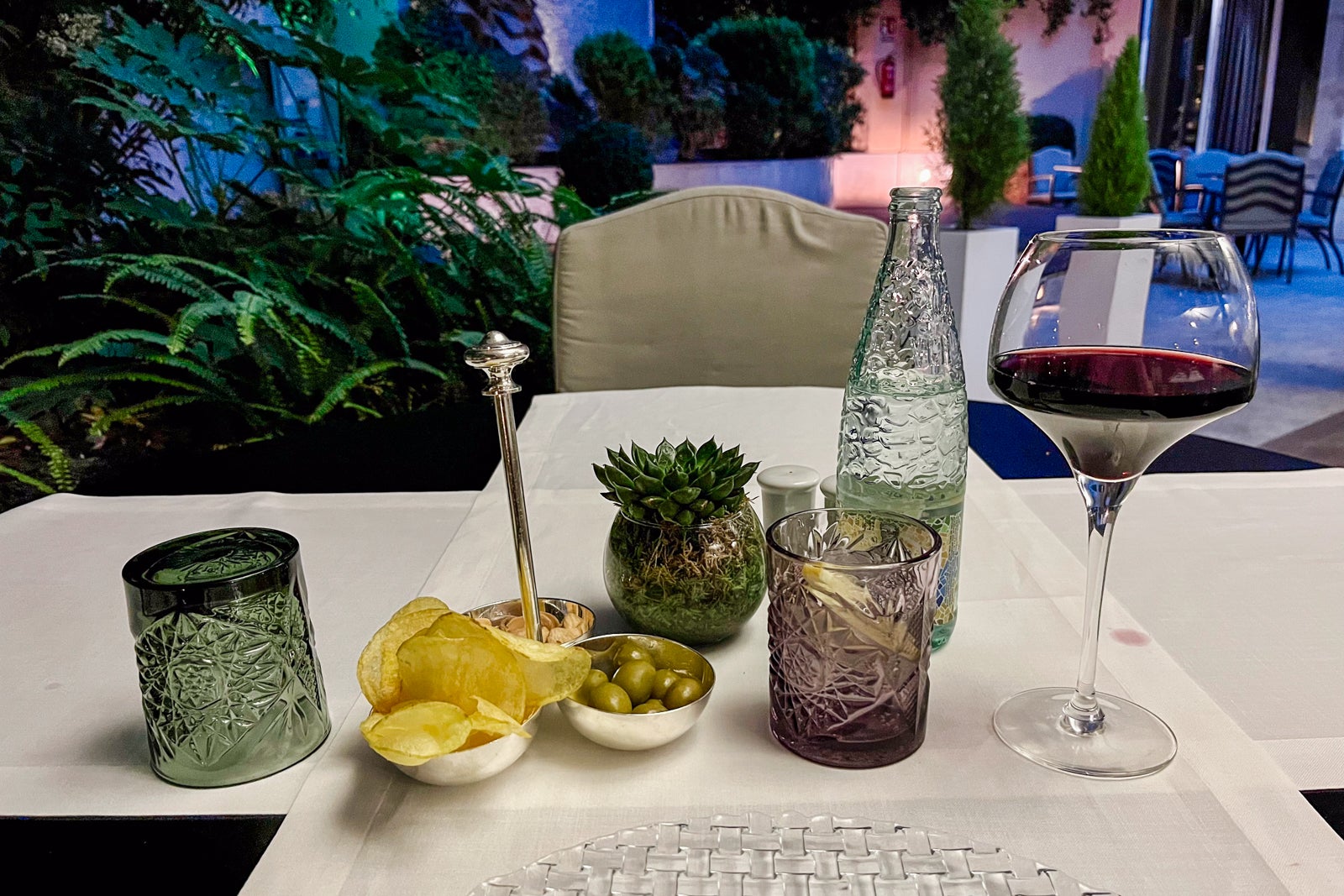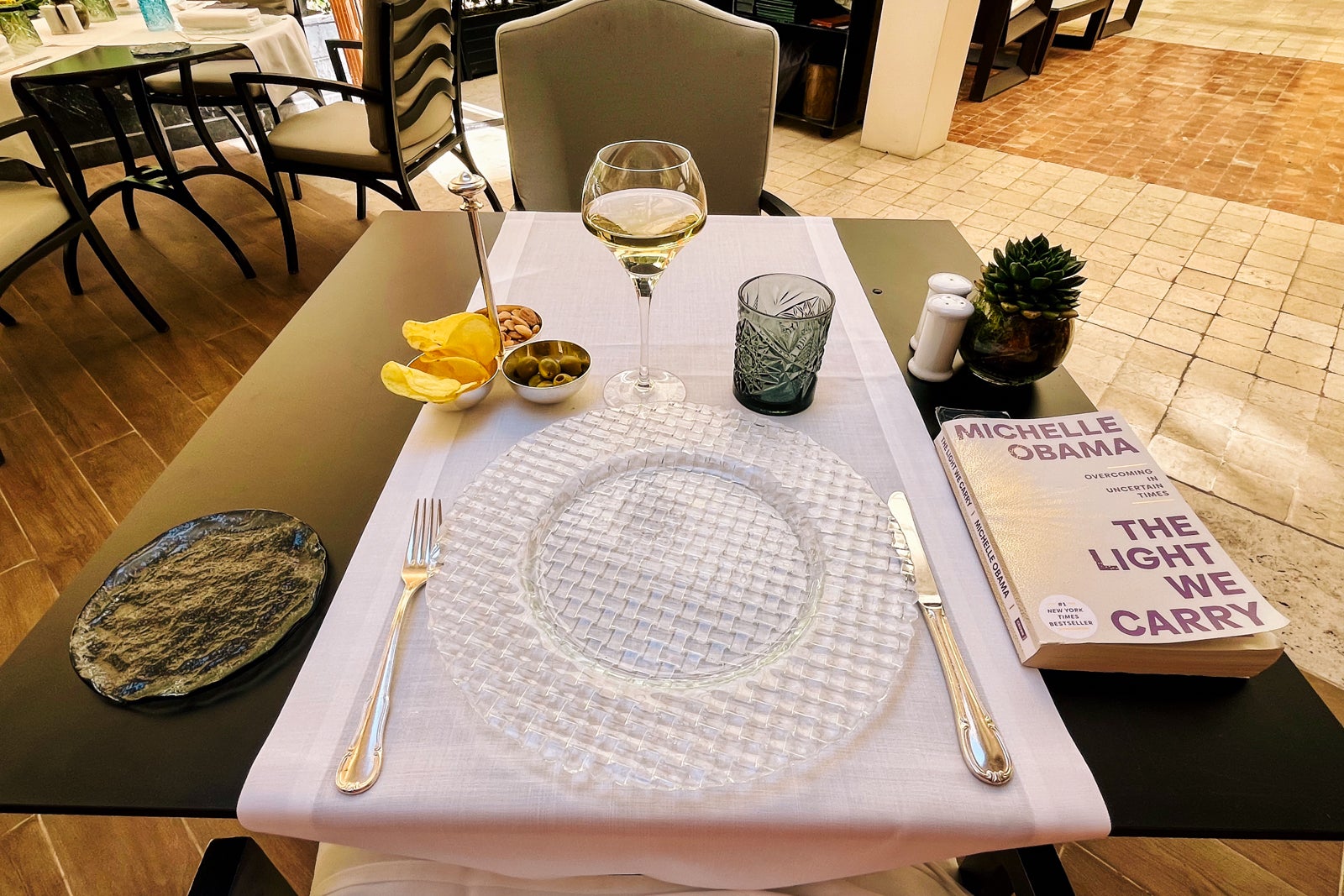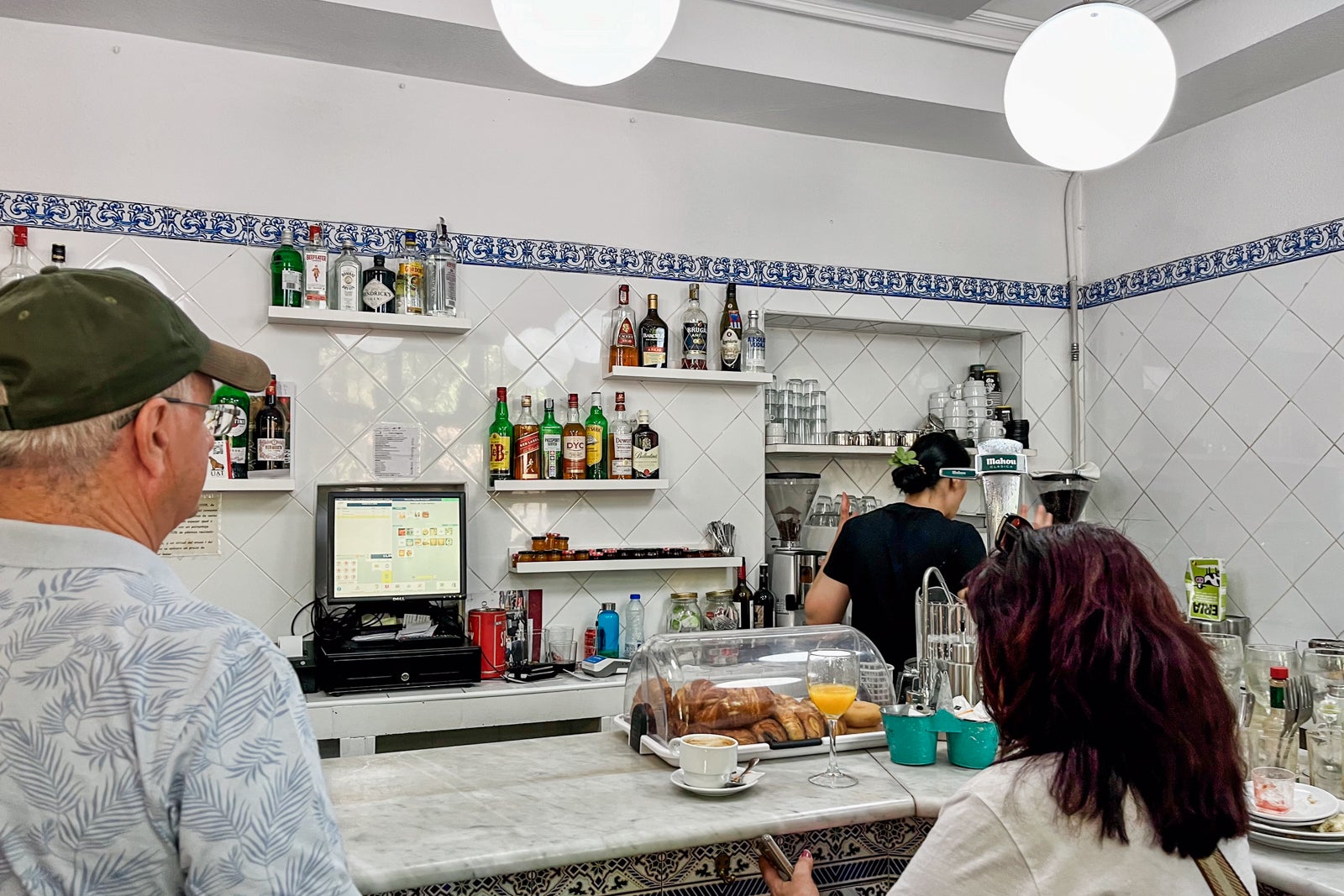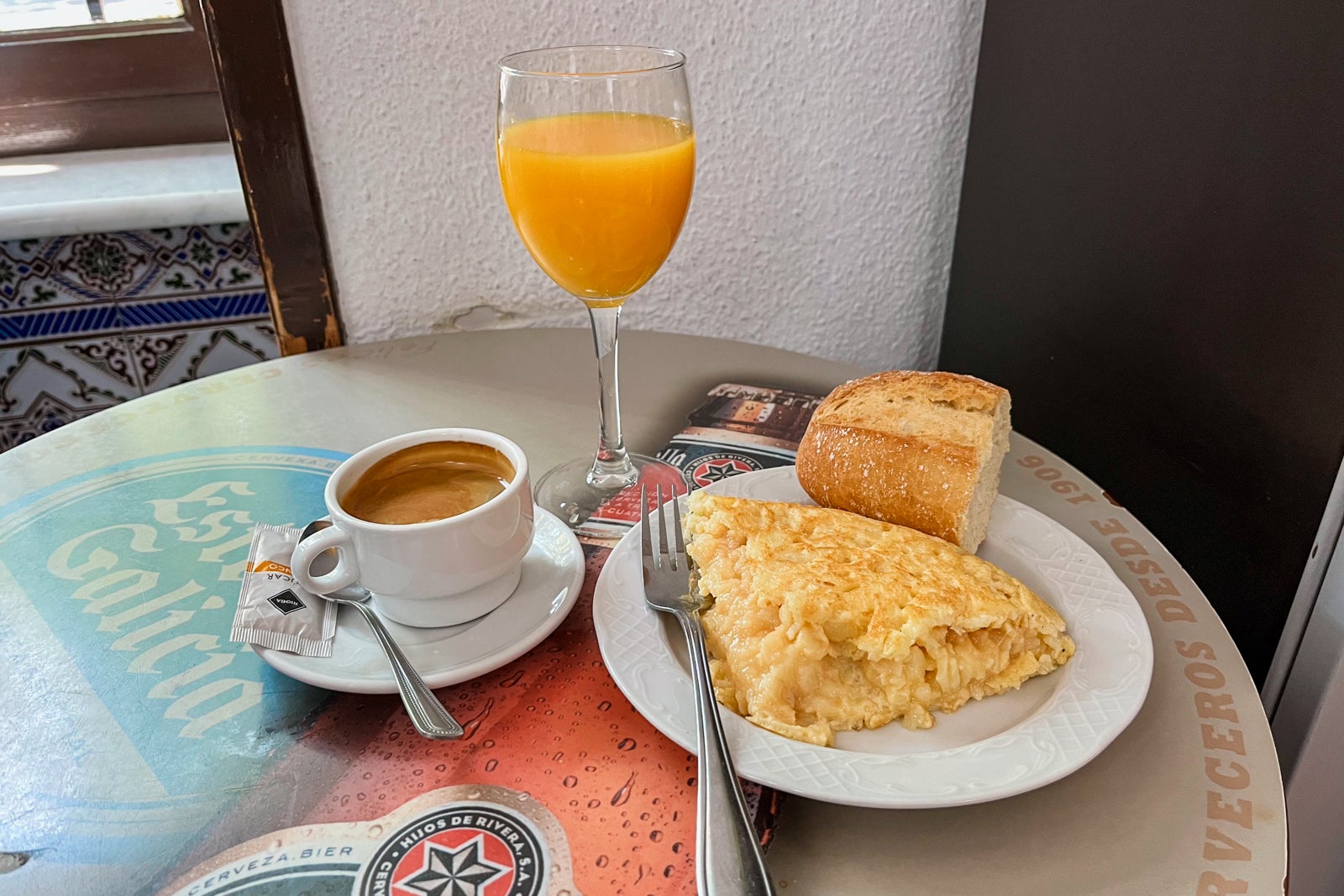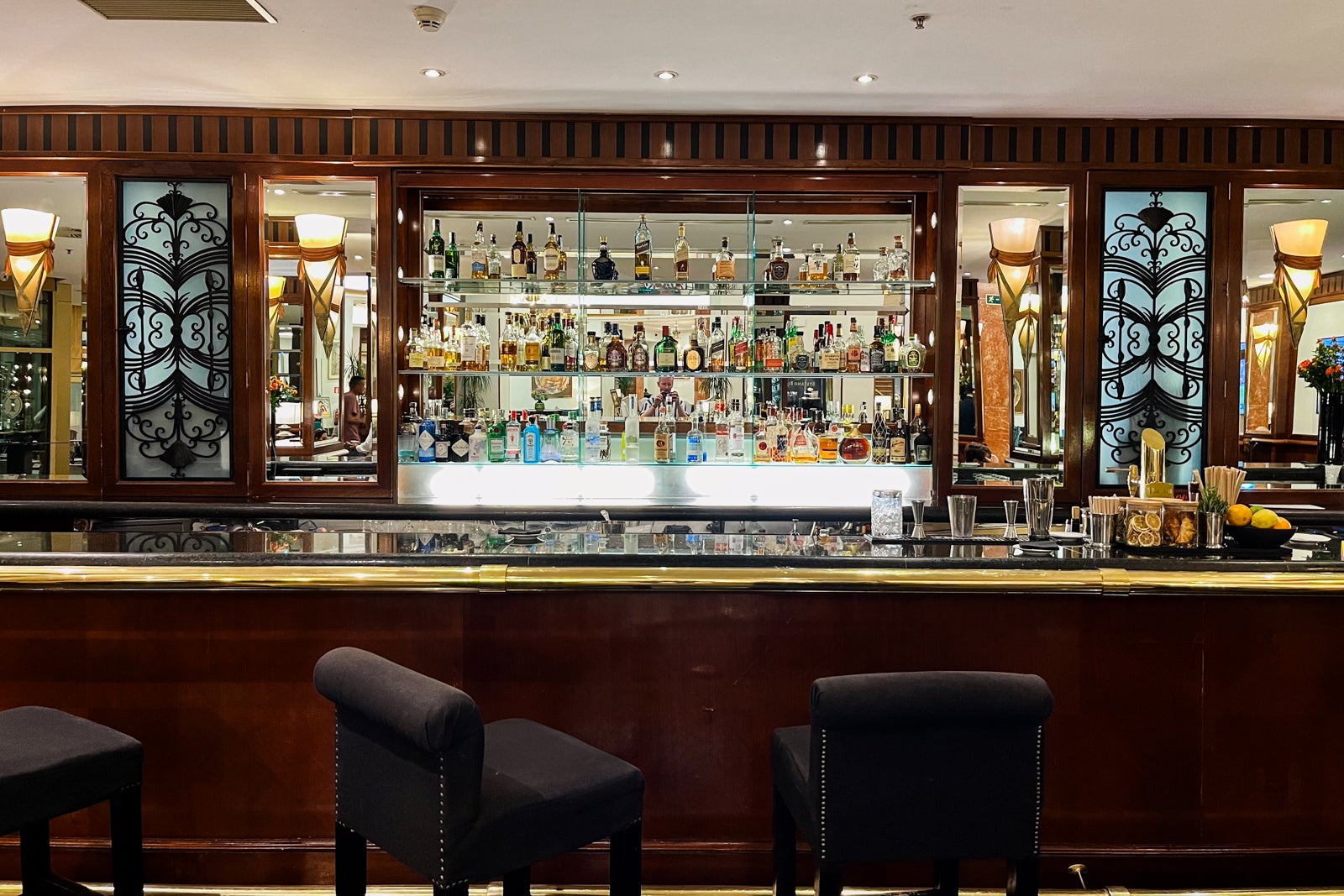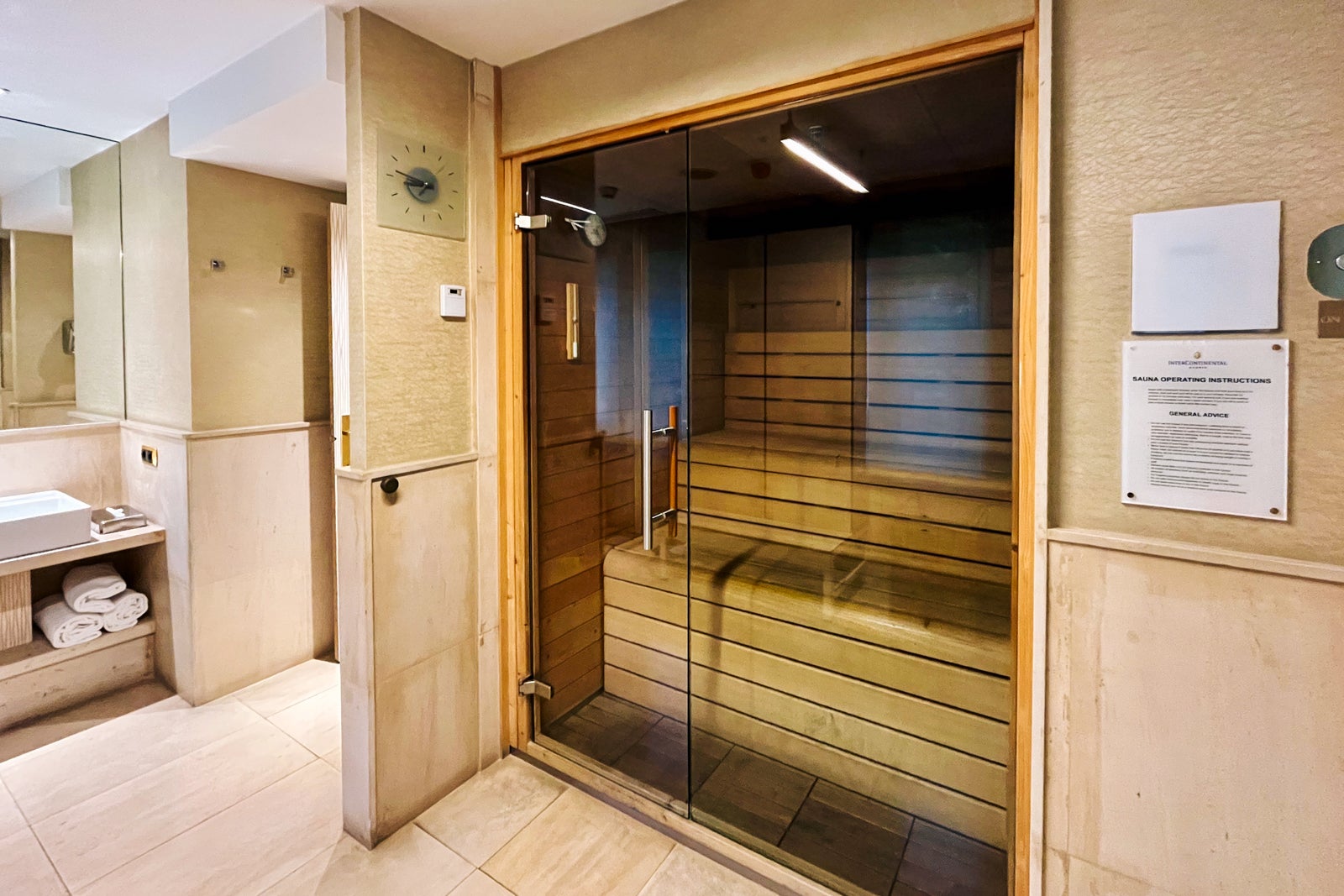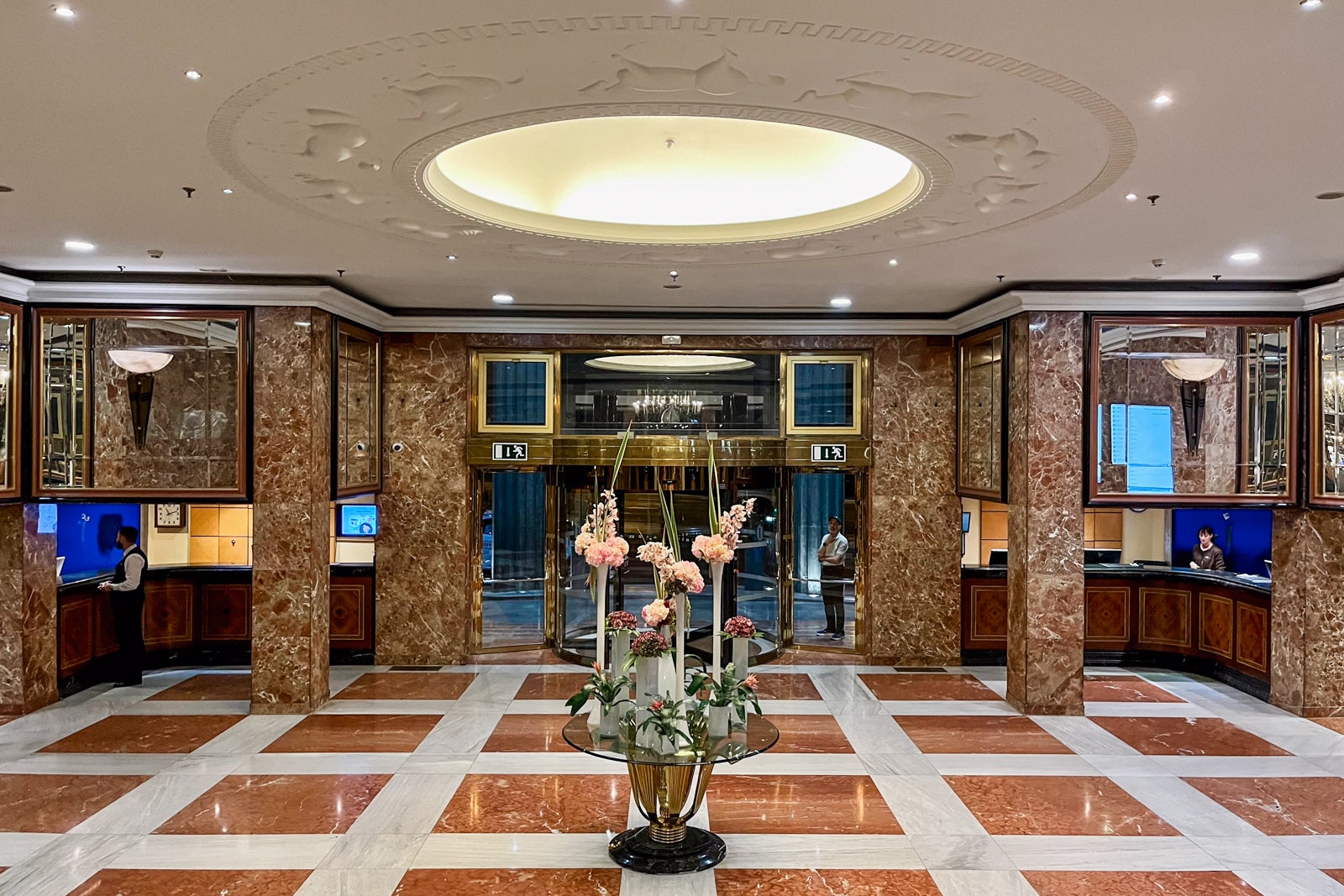InterContinental Madrid review – The Points Guy
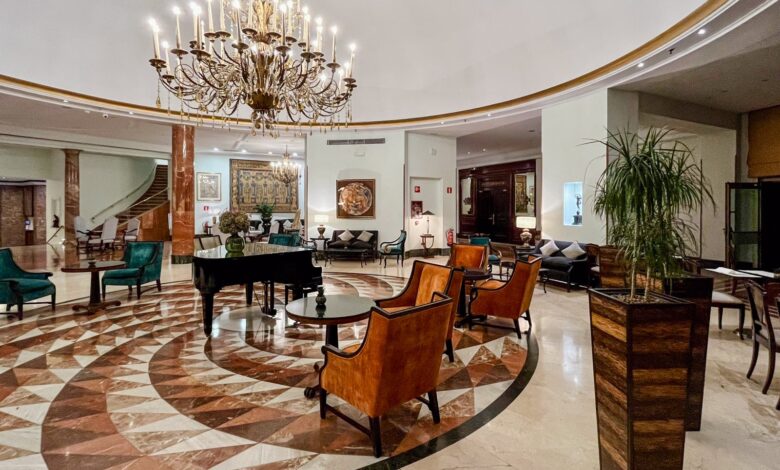
Nestled in an upscale neighborhood of Spain’s vibrant capital, the InterContinental Madrid is a beacon of luxury and hospitality in the city’s booming high-end hotel scene.
Built in 1953 on the foundations of a 19th-century palace and designed by architect Luis Feduchi, the hotel attempts to blend classic elegance and modern sophistication. But does it achieve that?
As someone who lived in Madrid for two years in the 2010s and visits the city annually, I was keen to test out a property in a city that is very familiar to me. Read on for my take on whether this hotel is the right one for your next stay in Spain’s capital.
Getting to InterContinental Madrid
The InterContinental Madrid, an IHG hotel, is in the northern part of the city, in the Castellana neighborhood — one of the city’s most exclusive and upscale zones. Here, you can find wide, tree-lined boulevards, elegant architecture, luxury boutiques, high-end restaurants and prestigious cultural institutions. The hotel is on Paseo de la Castellana, the city’s main artery running north to south.
This property is a great choice if you want to experience the luxurious side of Madrid in Barrio Salamanca, travel to the city for business near the Nuevos Ministerios area or attend an event at the Santiago Bernabeu Stadium. All of these areas are within walking distance of the hotel.
However, if you want to be close to the main tourist attractions — such as the Royal Palace, Sol, Gran Via and Retiro Park — a more centrally located hotel like the Mandarin Oriental Ritz or Thompson is a better choice.
With that said, Madrid’s public transport system is one of the world’s most extensive, so it’s easy to get around from this hotel. You’re one block away from the Gregorio Maranon and Ruben Dario subway stations, which can take you to the center. Frequent buses also run along the avenue in front of the hotel.
However, I’d recommend taking a taxi or ride-hailing service to and from the airport. This should cost about 30 euros ($34) each way and take 20 to 40 minutes, depending on the traffic. The public transport option is to catch the Line 8 train from Nuevos Ministerios; this involves either a lot of walking or a station transfer where you’ll have to lug your suitcases up and down escalators.

Daily Newsletter
Reward your inbox with the TPG Daily newsletter
Join over 700,000 readers for breaking news, in-depth guides and exclusive deals from TPG’s experts
Booking details
A base-level room averages 70,000 IHG One Rewards points per night. Depending on the date and season, you can find rooms for as cheap as 40,000 points or more than 100,000 points.
(Here is a hack to find the cheapest dates. Remember, IHG cardholders can get their fourth night free on stays of four nights or more.)
Cash rates start at 225 euros ($252), including taxes and fees, and can top 550 euros ($615) on busy dates. We advise getting an IHG cobranded card for elite status benefits but maximizing your earnings by using a general travel rewards card to pay for your stay.
If you have an eligible American Express card like The Platinum Card® from American Express or the American Express® Gold Card, booking through The Hotel Collection is the way to go (minimum two-night stay). You’ll receive:
- A room upgrade at check-in, when available
- An up to $100 experience credit to spend on qualifying dining, spa and resort activities
- 2 or 5 points per dollar spent when you use your Gold or Platinum card, respectively, for prepaid bookings
Note that you must pay for any incidentals with an Amex card.
I booked a three-night stay for July 2024 through The Hotel Collection for $864. This stay qualified for the $200 prepaid hotel credit on my Amex Platinum (which can also be used for Fine Hotels + Resorts stays). I also took advantage of a third-night-free promotion through The Hotel Collection.
After I made my booking six weeks before my stay, I emailed the hotel to ask them to add my IHG One Rewards member number to the reservation and to request an early check-in. The Hotel Collection and Fine Hotels + Resorts properties are not required to honor your elite status on these bookings, but it’s worth a try.
After landing on Iberia’s nonstop flight from Chicago at 7:30 a.m., I arrived in the hotel lobby at 9 a.m. The friendly reception agent gave me a welcome pack, recognizing both my The Hotel Collection and IHG Platinum status benefits. The perks overlapped except for 600 bonus welcome points, thanks to my IHG status.
I was quoted a one-hour wait for my room, so I worked from the tranquil hotel lobby. I would’ve appreciated a quick update that the wait ended up being 20 minutes longer. Still, I was nonetheless appreciative that I got to my room at 10:20 a.m. — more than four hours before the official 3 p.m. check-in time.
When booking InterContinental Madrid, you’ll want to use one of the credit cards that earn the most points for IHG stays, as well as one that possibly offers automatic IHG One Rewards elite status for value-added benefits. These include:
Standout features
- Incredibly comfortable bed
- A quiet and tranquil atmosphere
- Elegant design
- Friendly, attentive service
- Fast Wi-Fi speeds
Drawbacks
- Inconvenient location for most tourists
- Lackluster, bland food
- Out-of-date furnishings
The vibe
The InterContinental Madrid offers a sophisticated and elegant vibe. Its classic charm creates a refined atmosphere. Guests can expect traditional furnishings, high-end service and a luxurious ambience throughout the property.
1 of 5
MATT MOFFITT/THE POINTS GUY
The overall experience is one of understated luxury and comfort, perfect for those seeking a classy yet welcoming environment. However, travelers looking for a more modern, cosmopolitan and younger vibe might find the property stuffy and old-fashioned.
The room
Don’t judge a book by its cover. Based on the photos I’d seen on review sites, I had low expectations of this hotel’s rooms. They seemed to give off quite dated vibes. However, I was pleasantly surprised by how the traditional styling felt homey and comfortable during my stay.
I was upgraded to a huge premium room with a king bed. It was on a club floor, but I did not receive club access. The living section of the room featured a comfortable sofa and armchair.
1 of 3
MATT MOFFITT/THE POINTS GUY
This was one of the best hotel beds I’ve ever slept in. The four pillows were large and soft and the linens cozy but breathable. The wide bed made it easy to stretch out — especially as a solo traveler — and I appreciated that it was far from the door to reduce hallway noise.
1 of 4
MATT MOFFITT/THE POINTS GUY
The large bathroom featured a double vanity, a bathtub and a separate toilet with a bidet. However, the hotel missed the mark with the cramped shower, which should have a wider screen to prevent water from accumulating on the floor.
1 of 5
MATT MOFFITT/THE POINTS GUY
The upside of my interior-view room was that it was away from the noise of the main avenue, and the windows could be opened to let in fresh air. The downside? It wasn’t the most attractive view.
The television folded out, making watching from the bed or couch easy. Having my name on the screen was a nice touch but a “Mr.” salutation before my surname would’ve been more appropriate.
1 of 2
MATT MOFFITT/THE POINTS GUY
It was my first time encountering an air conditioning unit as ancient-looking as this one. I had low expectations for how well it would work — a common complaint from Americans traveling to Europe — but it was one of the most effective AC units I encountered during my entire five-week trip to Europe this summer.
The minibar prices were on the higher side but somewhat reasonable, and I appreciated the clear pricing. Be careful moving around the items as the billing is sensor-activated. I went to the supermarket to buy some drinks and yogurt to put in the fridge, and we had to make corrections to my bill at checkout.
1 of 2
MATT MOFFITT/THE POINTS GUY
Be sure to bring a power adapter, as the outlets only accept European plugs.
A generic espresso machine provided a much-needed afternoon boost to kick my jet lag, and staff proactively replenished the coffee pods daily.
The surprise lemon merengue tart and assorted macarons that housekeeping left on my second and third days were a nice treat.
1 of 2
MATT MOFFITT/THE POINTS GUY
Even though the telephone looked like it was from the 1980s, the Wi-Fi connection in my room and throughout the property was reliable; it offered lightning-fast speeds of 130 Mbps, making it easy to work from here.
1 of 2
MATT MOFFITT/THE POINTS GUY
I will note that while this hotel is in an upscale area in a city that is known for low crime, it is not a great choice for those concerned with safety. Anyone off the street can enter the hotel, take an elevator and come straight up to your door without a keycard. There are no deadbolts or extra locks on your door.
Food and drink
After a recharging two-hour siesta on the day of my arrival, I headed out for an evening stroll around the neighborhood to get some sunlight and returned to the hotel to have dinner at the property’s only restaurant, El Jardin. To my surprise, I was the only person dining at 10 p.m. on a summer weeknight — not that I’m complaining.
My jet lag melted away, sitting in the warm summer evening air under a huge umbrella. The gentle misters cooled me down as I listened to the calming sounds of waterfalls and water features throughout the foliage-filled eatery.
This establishment serves typical Spanish fare. Remember that meal times are later in Spain than in the U.S. Lunch is from 1:30 to 4 p.m., and dinner is from 8 to 11 p.m. at this eatery. A Sunday brunch is served from 1:30 to 4 p.m. (except in August, when many Madrilenos head to the coast for vacation) and costs 94 euros ($105) per person.
Starters cost around 18 euros ($20), and mains are about 35 euros ($39).
I found the food underwhelming and bland. I initially thought my dinner was a one-off, but I had the same experience with two breakfasts and one lunch I ate at the hotel.
I know that Spanish food tends to be simpler in terms of preparation, focusing on the quality of the ingredients to carry the taste. Unfortunately, the food here lacked punch. The subdued taste profile in most dishes meant nothing stood out.
For this dinner, I had cod, a very popular fish in Spain, with artichokes in a sauce typical from the northern Basque region of the country (20 euros, or $22). I paired it with a strong 2020 Rioja red wine (8 euros, or $9), followed by a disappointing fish main with potatoes (31 euros, or $35).
1 of 2
MATT MOFFITT/THE POINTS GUY
Lunch the next day was a 42 euro ($47) set menu.
1 of 3
MATT MOFFITT/THE POINTS GUY
Again, I set myself up outside with a glass of white albarino wine to start.
I started with a Caprese salad, dug into grilled squid and rice for my main, and finished with a cheesecake. While the outside atmosphere was chill and relaxing, the food was not memorable.
1 of 2
MATT MOFFITT/THE POINTS GUY
A buffet breakfast costs 32 euros ($36) per person and is served from 7 to 11 a.m. daily. You can choose from three seating areas: outside (for tranquility), the atrium (to be closer to the food) and inside (overflow for when it’s busy).
1 of 2
MATT MOFFITT/THE POINTS GUY
The breakfast highlights are the Spanish omelet, Iberian and serrano hams, Spanish cheeses and churros.
1 of 4
MATT MOFFITT/THE POINTS GUY
Here is the full spread, which is what you would expect from a luxury hotel anywhere in the world.
1 of 9
MATT MOFFITT/THE POINTS GUY
On my final day, I decided to try something different (and cheaper): I walked two minutes to a cafe on the same block for breakfast. It was rated 4.6 on Google Maps and was packed with locals.
For 7 euros ($8), I got a huge serving of Spanish omelet with a slice of white bread, coffee and orange juice.
What are the pros of this approach? It saves you money, allows you to explore your surroundings and gives you a better idea of the local culture. The cons are that you may have difficulties if you don’t speak the language, and they are less likely to cater to special dietary requirements.
Finally, the bar is open from 8 a.m. until 2 a.m. daily, and you can enjoy a drink on the terrace from 8 p.m. until close.
Amenities and service
Service was very professional and attentive in every interaction I had throughout my 72 hours at the hotel. Although I communicated mostly in Spanish, some staff members automatically spoke with me in English and were proficient in their language skills.
The 24-hour fitness center is a pretty standard one, with strength machines, free weights and cardio equipment — but don’t expect any high-end Pelotons here.
1 of 4
MATT MOFFITT/THE POINTS GUY
However, there is a sauna in the men’s and women’s changing rooms.
A wellness spa offers a very limited treatment menu of massages and facials, starting at 145 euros ($162). It’s closed on Sundays.
An old-school business center is open 24 hours and offers computers and printers.
The Club Lounge is open daily from 7 a.m. to 11 p.m. It offers eligible guests private breakfast and appetizers, snacks and drinks throughout the day, as well as an ironing service and 10% discount at the restaurant.
Pet lovers can bring one pet only per room (weighing eight kilograms maximum) for a daily cost of 40 euros ($45) plus tax and a 250 euro ($280) deposit. You will receive a small bed, two bowls and a cookie; the pet is not permitted in the public areas of the hotels.
Accessibility
The hotel entrance, lobby bathrooms and restaurant are wheelchair-accessible.
There are two accessible, Americans with Disabilities Act-compliant guest rooms. They have features such as grab bars, portable bathtub seats, a handheld shower with hose, built-in transfer shower seats, handrails and accessible bathroom controls.
Hearing-impaired guests can access visual alarms and vibrating pillows.
Vision-impaired guests can access emergency instructions in 14-point print, braille on elevators and in public areas, and audible alarms in hallways.
To learn more, check out the InterContinental Madrid’s accessibility page.
Checking out
One of the best things to do in Madrid is enjoy the city’s dining and nightlife options. As someone who has visited every year for the past decade and a half, I’d argue it’s the city’s main attraction, as it doesn’t have the architectural marvels of Barcelona or the stunning coastlines of the Costa del Sol.
Unfortunately, InterContinental Madrid doesn’t quite live up to the city’s fame because its dining options are lackluster. Perhaps that’s why I was the only one dining there on my first night at the hotel.
Taking the food out of the equation, though, this hotel is well-priced compared to other luxury properties in the city — especially if you can get The Hotel Collection benefits as an American Express cardmember. You’ll enjoy a comfortable bed, a tranquil neighborhood and friendly service.
The hotel’s location outside the city center best suits business travelers. By contrast, if you are coming to Madrid for pleasure, look into better-located alternatives that are on the doorstep of what you’re really looking to enjoy in the Spanish capital.
Related reading:
